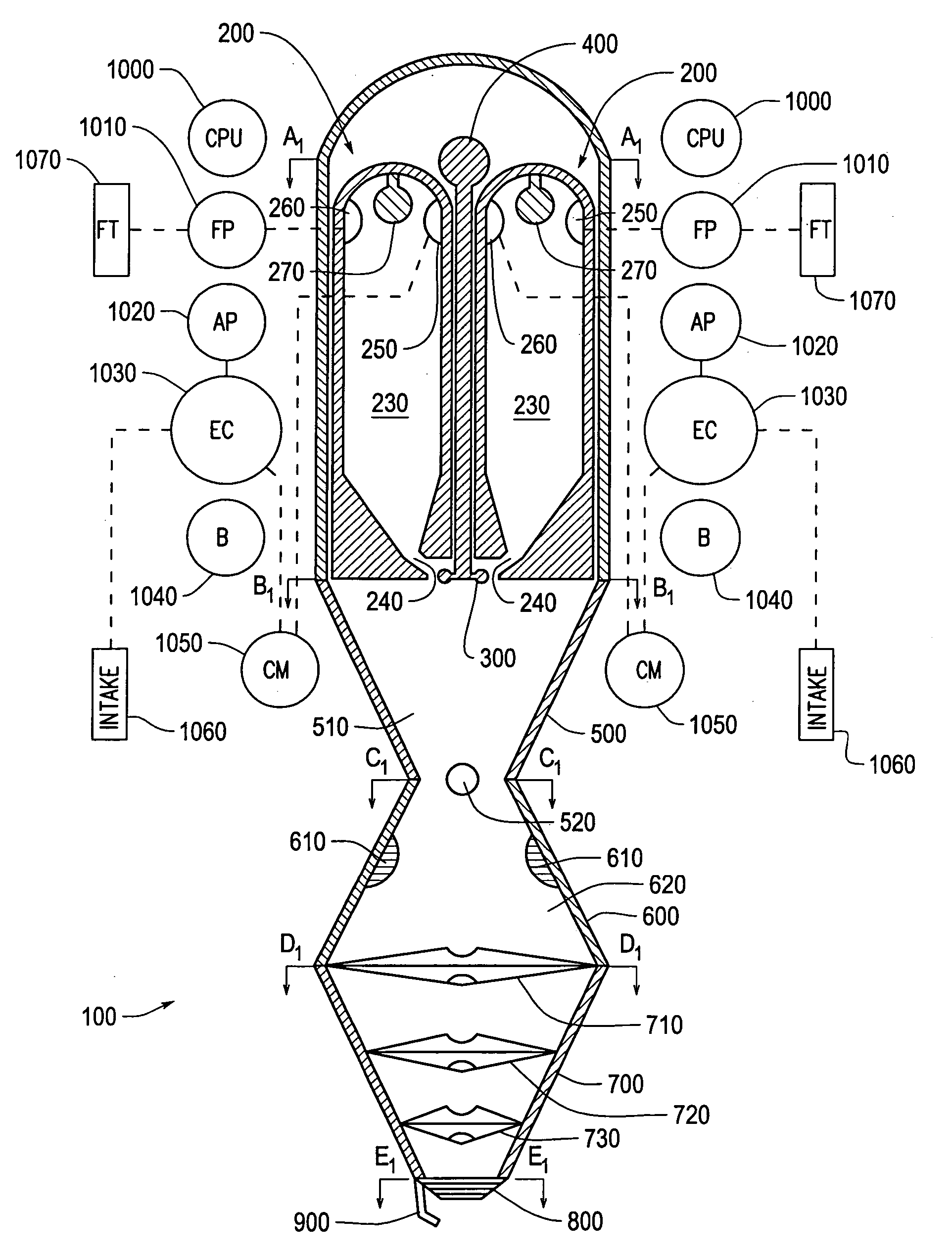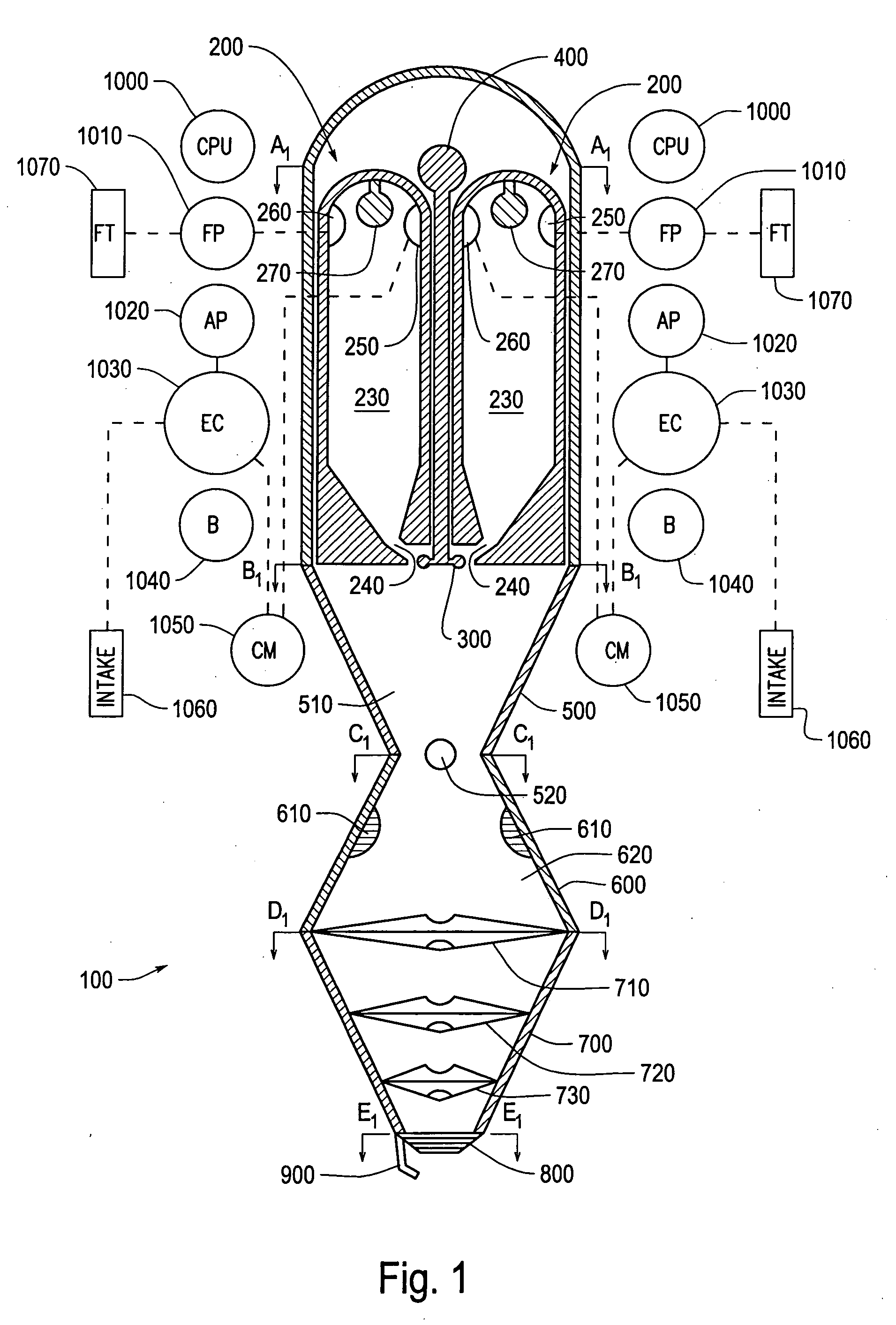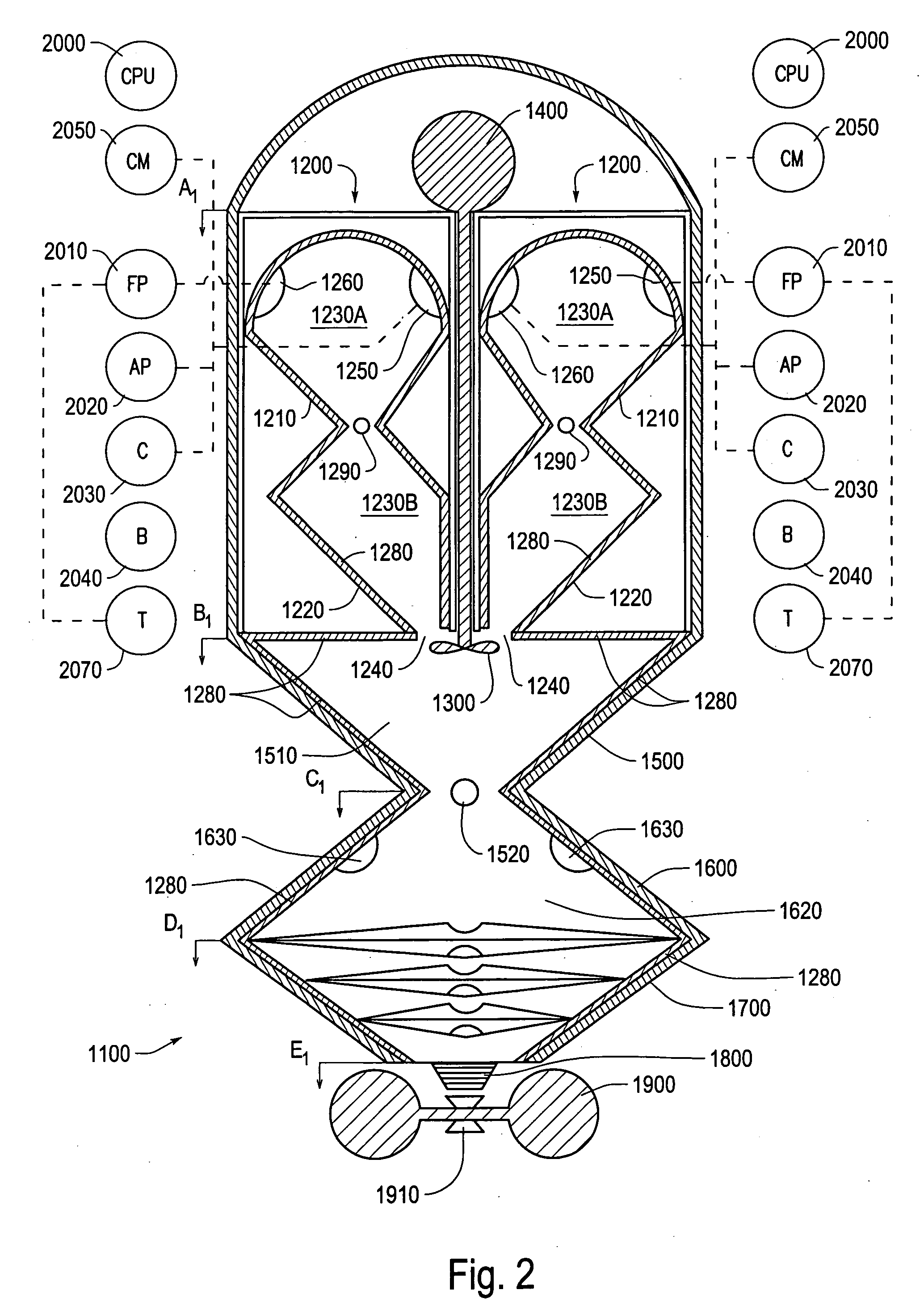Quantum jet turbine propulsion system
a jet turbine and jet propulsion technology, applied in the field of modified jet engines, to achieve the effect of safe, efficient and environmentally friendly
- Summary
- Abstract
- Description
- Claims
- Application Information
AI Technical Summary
Benefits of technology
Problems solved by technology
Method used
Image
Examples
Embodiment Construction
[0023] An exemplary embodiment of the invention will be described with reference to FIG. 1, which shows dual quantum jet turbine engines housed in a common air-tight sealed exhaust system. The jet engines do not take in air directly from the atmosphere as in conventional jet engines. Rather, air or oxygen are received through sealed feed lines from efficient and independent on-board air compressors on the craft or externally provided for the engines. The air compressors may receive and transfer to the quantum jet engines air / oxygen received from either a remote storage tank or a remote air intake separate from the sealed jet turbine engines. The incoming air may be filtered as desired. The incoming air may also be chilled before being pumped into the jet engines. This puts an end to the numerous problems associated with conventional jet engine designs that are prone to sucking large objects into their jet engine intakes.
[0024] Although shown as a dual engine model, the quantum jet ...
PUM
 Login to View More
Login to View More Abstract
Description
Claims
Application Information
 Login to View More
Login to View More - R&D
- Intellectual Property
- Life Sciences
- Materials
- Tech Scout
- Unparalleled Data Quality
- Higher Quality Content
- 60% Fewer Hallucinations
Browse by: Latest US Patents, China's latest patents, Technical Efficacy Thesaurus, Application Domain, Technology Topic, Popular Technical Reports.
© 2025 PatSnap. All rights reserved.Legal|Privacy policy|Modern Slavery Act Transparency Statement|Sitemap|About US| Contact US: help@patsnap.com



